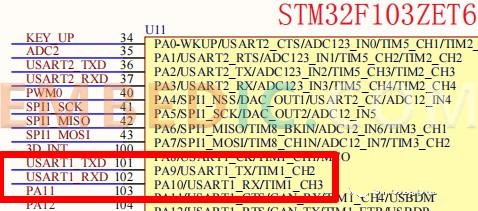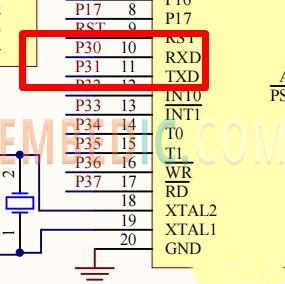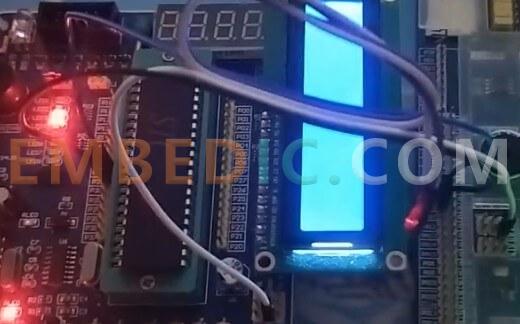A single-chip microcomputer is referred to as a microcontroller. Simply put, it is a device that integrates CPU (operation, control), RAM (data storage-memory), ROM (program storage), input and output devices (serial port, parallel port, etc.) and interrupt system on the same chip. .
In our own personal computer, CPU, RAM, ROM, and I/O are all separate chips, and then these chips are installed on a motherboard, which constitutes our PC motherboard, and then assembled into a computer. It's just that all of this is concentrated on one chip.
The most widely used 8-bit microcontroller is of course the easiest one for beginners to learn. It was first launched by Intel. Due to its typical structure and perfect centralized management of bus-specific registers, numerous logic bit operation functions and rich control-oriented The command system can be called a generation of "classics", which laid the foundation for the development of other single-chip microcomputers in the future.
The reason why the 51 microcontroller has become a classic and easy-to-use single-chip microcomputer mainly has the following characteristics:
1) There is a complete set of bit-by-bit operating system from internal hardware to software, which is called a bit processor, and the processing object is not a word or a byte but a bit. Not only can it process a certain bit of some special function registers in the chip, such as transmitting, setting, clearing, testing, etc., but it can also perform logical operations on bits. Its functions are very complete and it is easy to use.
2) At the same time, a dual-function address range is specially created in the on-chip RAM range, which is extremely flexible to use. This function undoubtedly provides great convenience to users.
3) Division instructions and multiplication can also bring convenience to programming. Many eight-bit single-chip microcomputers do not have the multiplication function, and it is very inconvenient to compile a subroutine to call when doing multiplication.
At present, it is widely used in teaching occasions and occasions with low performance requirements, and the most used devices are 8051 and 80C51.
The STM32 series of single-chip microcomputers launched by ST manufacturers, friends in the industry know that this is a series of single-chip microcomputers with high cost performance, which should not be one of them, and its functions are extremely powerful.
It is based on the ARM Cortex-M core specially designed for embedded applications requiring high performance, low cost, and low power consumption, and has first-class peripherals: 1μs dual 12-bit ADC, 4 Mbit/s UART, 18 Mbit/s SPI, etc. also have good performance in terms of power consumption and integration. Of course, it is slightly inferior to the power consumption of MSP430, but this does not affect the popularity of it among engineers.
The STM32 microcontroller is of the simple structure and easy to use. Its powerful functions are mainly reflected in:
Core: ARM32-bit Cortex-M3CPU, 1.25DMIPS/MHz, maximum operating frequency 72MHz, single-cycle multiplication and hardware division
Memory: On-chip integrated 32-512KB Flash memory. 6-64KB SRAM memory
Clock, reset and power management: 2.0-3.6V power supply and driving voltage for I/O interface. POR, PDR, and programmable voltage detector (PVD). 4-16MHz crystal oscillator. Built-in 8MHz RC oscillator circuit adjusted before factory. Internal 40 kHz RC oscillator circuit. PLL for CPU clock. 32kHz crystal with calibration for RTC
Debug mode: serial debug (SWD) and JTAG interface. Up to 112 fast I/O ports, 11 timers, and 13 communication interfaces.
51 microcontroller is the collective name for all microcontrollers compatible with the Intel8031 instruction system. The ancestor of this series of microcontroller is Intel's 8031 microcontroller. Later, with the development of flash ROM technology, the 8031 single-chip microcomputer has made great progress and has become the most widely used 8bit One of the single-chip microcomputers, his representative model is the AT89 series of ATMEL company.
The STM32 microcontroller is a 32bit series microcontroller produced by ST (Standard Semiconductor) using the cortex-M3 of arm company as the core. Its internal resources such as the registers and peripheral functions are much more than 8051, AVR and PIC. It is basically close to the CPU of a computer, suitable for mobile phones, routers, etc.
Further Reading: ESP32 vs STM32, Which is Better and How to Choose 2022
Write the programs of STM32 and 51 single-chip microcomputer respectively, and realize the experimental effect of STM32 button control 51 single-chip microcomputer LED through serial port communication.
The chip models of the two development boards are STM32F103ZET6 and STC89C52.
Hardware Connection Schematic Diagram
The following are the schematic diagrams of STM32 and 51 microcontrollers.

STM32 development board USART1 pin

Regarding serial communication, several important knowledge points:
Among them, the last three items are generally 8, N, 1. Wiring. According to the schematic diagram, cross-connect the TXD and RXD of the two development boards with a DuPont line, and directly connect the two GNDs, as shown in the figure below.

Manufacturer: Analog Devices
IC DSP 400MHZ 1.4V 120LQFP
Product Categories: DSP
Lifecycle:
RoHS:
Manufacturer: Texas Instruments
IC DSP FIX/FLOAT POINT 841FCBGA
Product Categories: DSP
Lifecycle:
RoHS:
Manufacturer: Texas Instruments
IC DSP FIX/FLOAT POINT 841FCBGA
Product Categories: DSP
Lifecycle:
RoHS:
Manufacturer: Texas Instruments
IC DSP FIX/FLOAT POINT 176HLQFP
Product Categories: DSP
Lifecycle:
RoHS:
Looking forward to your comment
Comment